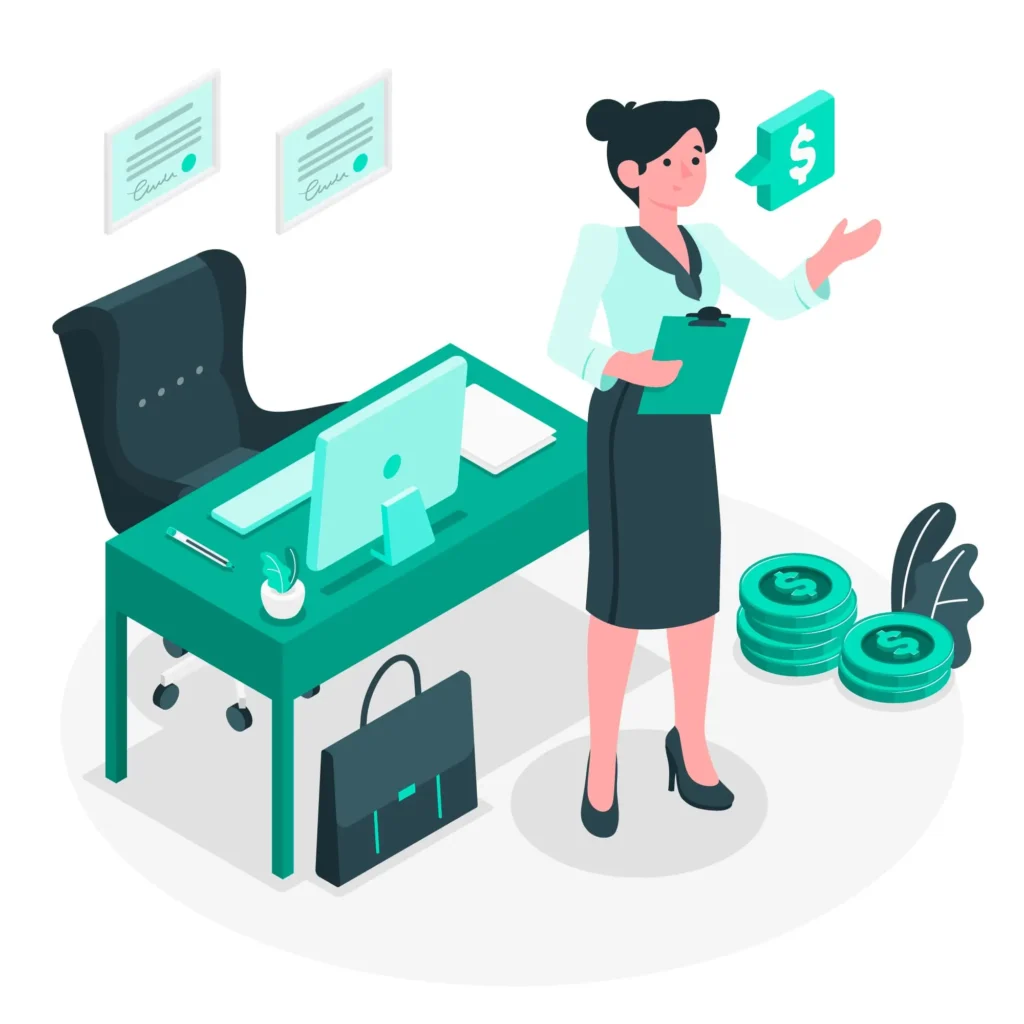Small Business Loans
Small Business Loans for Women: Options and Resources
- Dileep K Nair
- July 10, 2025
Table of Contents
Key Takeaways
- Women entrepreneurs can access tailored financing through SBA loans, business lines of credit, and nonprofit lenders to support business growth.
- SBA Women’s Business Centers provide free counselling and training to help women navigate loan applications and improve financial literacy.
- Grants, such as the Amber Grant, offer non-repayable funding to supplement loans for women-owned businesses.
- Responsible loan management, including timely payments and strategic borrowing, builds credit and enhances future financing opportunities.
- Comparing lenders and preparing a strong application with a detailed business plan increases the likelihood of loan approval.
Women entrepreneurs are driving significant change in the U.S. economy, owning approximately two out of every ten businesses and generating $1.8 trillion in annual revenue. Despite this progress, securing financing remains a challenge, as women-owned businesses often face higher rejection rates for loans compared to their male counterparts.
Understanding the available small business loan options and resources tailored for women can empower female entrepreneurs to access the capital needed to start, sustain, or grow their ventures.
This guide explores the best small business loans for women, government-backed programs, alternative funding sources, and practical steps to secure financing, ensuring you have the tools to make informed financial decisions.

Why Small Business Loans Matter for Women Entrepreneurs
Access to capital is critical for any business, but women entrepreneurs often encounter unique barriers when seeking funding.
According to a 2023 Federal Reserve study, women-owned businesses are less likely to receive full loan approval compared to male-owned businesses, and they may face stricter documentation requirements. These challenges can hinder growth, limit operational flexibility, and prevent women from fully realizing their business potential.
Small business loans for women provide a pathway to overcome these obstacles by offering tailored financing solutions, competitive interest rates, and flexible repayment terms.
Specialized loan programs, such as those offered by the U.S. Small Business Administration (SBA) and nonprofit lenders, aim to level the playing field by supporting women-owned businesses with favorable terms and additional resources like business training and counselling.
By leveraging these options, women entrepreneurs can fund essential expenses such as inventory, equipment, marketing, or expansion, ultimately strengthen their financial foundation and contribute to long-term success.
What are the Types of Small Business Loans for Women
Several financing options are available to women entrepreneurs, each designed to meet different business needs.
Below, we outline the primary types of small business loans that women can consider, focusing on their features, benefits, and eligibility requirements.
1. SBA Loans
The U.S. Small Business Administration offers several loan programs that are particularly beneficial for women-owned businesses due to their competitive interest rates, long repayment terms, and government backing, which reduces lender risk. Key SBA loan programs include:
SBA 7(a) Loans
The SBA’s flagship program, 7(a) loans provide up to $5 million for a variety of purposes, including working capital, equipment purchases, and debt refinancing. These loans feature low interest rates (typically 10.5% to 15.5% based on the prime rate) and repayment terms up to 7 years for working capital or 25 years for real estate.
The SBA Express Loan, a subset of the 7(a) program, offers faster approval (within 36 hours) but caps funding at $500,000.
SBA Microloans
Ideal for startups or small businesses, SBA microloans provide up to $50,000 for working capital, inventory, or equipment. These loans have less stringent eligibility requirements, making them accessible to newer businesses.
Interest rates typically range from 8% to 13%, with repayment terms up to 6 years.
SBA 504 Loans
Designed for purchasing fixed assets like real estate or machinery, 504 loans offer up to $5 million with repayment terms of 10 to 20 years. These loans are particularly useful for women entrepreneurs looking to expand their physical operations.
SBA loans are delivered through approved lenders, such as banks or credit unions, and often come with counselling and educational resources to support business growth.
Women-owned businesses can also benefit from the SBA’s Women’s Business Centers (WBCs), which provide guidance on applying for these loans.
2. Business Lines of Credit
A business line of credit (LOC) offers flexible access to capital, allowing women entrepreneurs to draw funds as needed up to a predetermined limit. Compared to term loans, interest on LOC is only charged on the amount withdrawn, making LOCs ideal for managing cash flow, covering short-term expenses, or addressing unexpected costs.
For example, OnDeck offers lines of credit ranging from $6,000 to $100,000 with repayment terms up to 12 months, requiring a minimum credit score of 625.
American Express also provides business lines of credit up to $250,000, with interest only on the drawn amount, which is suitable for businesses with sporadic cash flow needs.
3. Term Loans
Term loans provide a lump sum of capital repaid over a fixed period, making them suitable for long-term investments like equipment purchases or business expansion.
OnDeck offers term loans from $5,000 to $250,000 with repayment terms up to 24 months, while iBusiness Funding provides loans up to $500,000 with terms up to 7 years, featuring no prepayment penalties.
These loans often require a minimum credit score of 620–640 and at least one to two years in business.
4. Microloans from Nonprofit Lenders
Nonprofit lenders like Accion Opportunity Fund focus on supporting underserved communities, including women entrepreneurs. Accion offers working capital and equipment loans with flexible eligibility criteria, requiring a minimum credit score of 550, at least 12 months in business, and annual revenue of $50,000.
These loans are ideal for startups or businesses that may not qualify for traditional bank loans due to lower credit scores or limited time in business.
5. Invoice Factoring
Invoice factoring allows businesses to sell unpaid invoices to a lender at a discount in exchange for immediate cash. Bluevine offers invoice factoring up to $5 million, with relatively low eligibility requirements, making it a viable option for women-owned businesses with significant accounts receivable.
This financing method helps improve cash flow, particularly for businesses waiting on client payments.
6. Crowdfunding and Peer-to-Peer Lending
Crowdfunding platforms like Kiva provide microloans up to $15,000 with 0% interest and no fees, targeting underserved communities. Kiva requires borrowers to demonstrate creditworthiness by inviting friends and family to lend, which can be a unique but effective way to secure funding.
Peer-to-peer (P2P) lending platforms connect borrowers with individual investors, offering an alternative to traditional loans. These options are particularly useful for startups or businesses with limited credit history.
Comparison of Small Business Loan Options for Women
To help women entrepreneurs choose the right financing, the table below compares key features of popular loan types:
| Loan Type | Loan Amount | Interest Rate | Repayment Term | Eligibility Requirements | Best For |
| SBA7(a) Loan | Up to $5 million | 10.5%-15.5% | Up to 7-25 years | 620+ credit score, 2+ years in business | Long-term financing, expansion |
| SBA Microloan | Up to $50,000 | 8%-13% | Up to 6 years | No minimum credit score, startups eligible | Startups, small expenses |
| Business Line of Credit | $6,000-$250,000 | 10%-56% | 6-24 months | 625+ credit score, 1+ year in business | Cash flow management, short-term needs |
| Term Loan | $5,000-$500,000 | 3%-27% | 3 months-7 years | 620+ credit score, 1–2 years in business | Equipment, expansion |
| Invoice Factoring | Up to $5 million | Varies(factor rate) | Varies | Low credit score acceptable,invoices required | Businesses with unpaid invoices |
| Crowdfunding(Kiva) | Up to $15,000 | 0% | Up to 36 months | Social proof via lending network | Startups, underserved communities |
Note: Interest rates and terms vary by lender and borrower qualifications. Always verify with lenders for current offers.
Key Resources for Women-Owned Businesses
Beyond loans, women entrepreneurs can access a variety of resources to support their financing journey and business growth. These programs offer training, counseling, and networking opportunities to enhance financial literacy and business acumen.
1. SBA Women’s Business Centers (WBCs)
The SBA operates a network of Women’s Business Centers across the U.S., providing free or low-cost business counseling, training, and mentorship. WBCs help women navigate loan applications, develop business plans, and connect with lenders.
They also offer workshops on financial management and access to federal contracting opportunities, helping women-owned businesses compete for government contracts.
2. National Women’s Business Council (NWBC)
The NWBC serves as an advisory council to the SBA, Congress, and the President, advocating for women entrepreneurs. It provides research, policy recommendations, and resources to address economic challenges faced by women-owned businesses, including access to capital.
The NWBC’s reports can help women understand market trends and funding opportunities.
3. Nonprofit Organizations
Organizations like Accion Opportunity Fund and SCORE offer specialized support for women entrepreneurs. Accion provides not only loans but also financial coaching to help women manage debt and grow their businesses.
SCORE hosts free webinars, such as those on funding options for women-owned businesses, and connects entrepreneurs with experienced mentors.
4. Grants for Women-Owned Businesses
Grants provide non-repayable funding, making them an attractive option for women entrepreneurs. While competition is high, grants like those offered through the SBA’s State Trade Expansion Program (STEP) can fund export-related activities.
Additionally, private organizations and corporations, such as the Amber Grant, offer grants specifically for women-owned businesses. Researching and applying for grants tailored to your industry or demographic can supplement loan funding.
How to Apply for Small Business Loans as a Woman Entrepreneur
Securing a small business loan requires preparation and an understanding of lender expectations. Follow these steps to improve your chances of approval:
Assess Your Business Needs
Check Your Credit Scores
Both personal and business credit scores impact loan eligibility. A score of 620 or higher is typically required for SBA loans and traditional term loans, though some lenders, like Accion, accept lower scores. Review your credit reports and address any errors before applying.
Gather Documentation
Lenders typically require documents such as:
- Business and personal tax returns
- Bank statements
- Business plan
- Financial statements (profit and loss, balance sheet)
- Proof of business registration and ownership
- Certificate of Good Standing
- Details of Collaterals, if required.
Research Lenders
Compare lenders based on interest rates, fees, repayment terms, and eligibility criteria. Online marketplaces like Lendio allow you to apply to multiple lenders with a single application, saving time and increasing your chances of finding favorable terms.
Apply for the Loan
Submit your application through the lender’s portal or in-person at a bank or credit union. For SBA loans, use the SBA’s Lender Match tool to connect with approved lenders. Be prepared to provide additional documentation if requested.
Leverage Support Resources
Work with SBA Women’s Business Centers or nonprofit organizations to refine your application and improve your pitch. These resources can also connect you with lenders who prioritize women-owned businesses.
Tips for Managing Small Business Loans Effectively
Once approved for a loan, managing it responsibly is crucial to maintain financial health and build a positive credit history. Consider the following strategies:
- Create a Repayment Plan: Budget for monthly payments and account for interest and fees. Use a business loan calculator to estimate total borrowing costs and ensure payments fit within your cash flow.
- Make On-Time Payments: Timely payments prevent late fees and boost your credit score. Set up automatic payments to avoid missing due dates.
- Avoid Overborrowing: Only borrow what you need to avoid excessive debt. For lines of credit, be strategic about withdrawals and repay balances quickly to minimize interest costs.
- Monitor Cash Flow: Regularly review your business’s cash flow to ensure you can cover loan payments, especially during slow seasons. Adjust expenses or seek additional revenue streams if needed.
- Refinance if Necessary: If interest rates drop or your credit score improves, consider refinancing to secure a lower rate or better terms. Consolidating multiple loans into one can also simplify repayment.
Challenges and Solutions for Women Seeking Business Loans
Women entrepreneurs often face higher scrutiny when applying for loans, including requests for additional documentation or personal guarantees. To overcome these challenges:
- Build a Strong Business Plan: A detailed business plan demonstrating your revenue potential and growth strategy can reassure lenders of your ability to repay.
- Improve Creditworthiness: Pay down existing debt and make timely payments on all accounts to boost your credit score before applying.
- Seek Specialized Lenders: Work with lenders like Accion Opportunity Fund or Kiva, which prioritize underserved communities and offer flexible eligibility criteria.
- Explore Alternative Funding: If traditional loans are out of reach, consider crowdfunding, grants, or P2P lending to supplement financing needs.
The Bottom Line
Small business loans for women provide critical capital to start, grow, or sustain a business, but navigating the financing landscape requires careful planning. By exploring options like SBA loans, business lines of credit, term loans, and nonprofit lending programs, women entrepreneurs can find the right funding to meet their needs.
Leveraging resources like SBA Women’s Business Centers, nonprofit organizations, and grants can further enhance access to capital and business success. Before applying, assess your financial needs, compare lenders, and prepare a strong application to secure favorable terms.
With strategic management, these loans can empower women-owned businesses to thrive in a competitive market.
For more information on specific loan programs or to connect with lenders, visit the SBA’s official website or contact a local Women’s Business Center.
Frequently Asked Questions (FAQs)- Small Business Loans for Women
Securing a business loan can be more challenging for women due to higher scrutiny and documentation requirements, as noted in a 2023 Federal Reserve study.
However, women can improve their chances by building a strong credit profile, preparing a detailed business plan, and working with lenders that prioritize women-owned businesses, such as Accion Opportunity Fund or SBA-approved lenders.
Leveraging resources like Women’s Business Centers can further streamline the application process.
Yes, minority women entrepreneurs can access specialized loans through nonprofit lenders like Accion Opportunity Fund, which focuses on underserved communities, including minority-owned businesses.
These loans often have flexible eligibility criteria, such as lower credit score requirements (550 minimum) and smaller revenue thresholds ($50,000 annually).
The SBA’s 8(a) Business Development Program also provides resources and loan access for minority women-owned businesses aiming to secure government contracts.
Grants offer non-repayable funding, reducing financial strain compared to loans, which require repayment with interest.
For women entrepreneurs, grants like the Amber Grant or those from the SBA’s State Trade Expansion Program can fund specific needs, such as marketing or export activities, without adding debt.
However, grants are highly competitive and often require detailed applications, making them a complementary rather than primary funding source.
To enhance loan approval odds, women entrepreneurs should maintain a credit score of at least 620, provide comprehensive documentation (e.g., tax returns, financial statements), and develop a robust business plan showcasing revenue potential.
Working with SBA Women’s Business Centers or nonprofit organizations for application guidance and exploring lenders with flexible criteria, like Kiva or Accion, can further increase success rates.
The SBA supports women entrepreneurs through its Women’s Business Centers (WBCs), which offer free or low-cost business counseling, training, and mentorship. These centers assist with loan applications, business plan development, and access to federal contracting opportunities.
The SBA’s Office of Women’s Business Ownership advocates for women-owned businesses, ensuring they have access to programs like the 7(a), microloan, and 504 loan programs tailored to their needs.
What’s Next?
You Might Also Like
Explore funding programs, eligibility guidance, and smart tools built to support your business.



